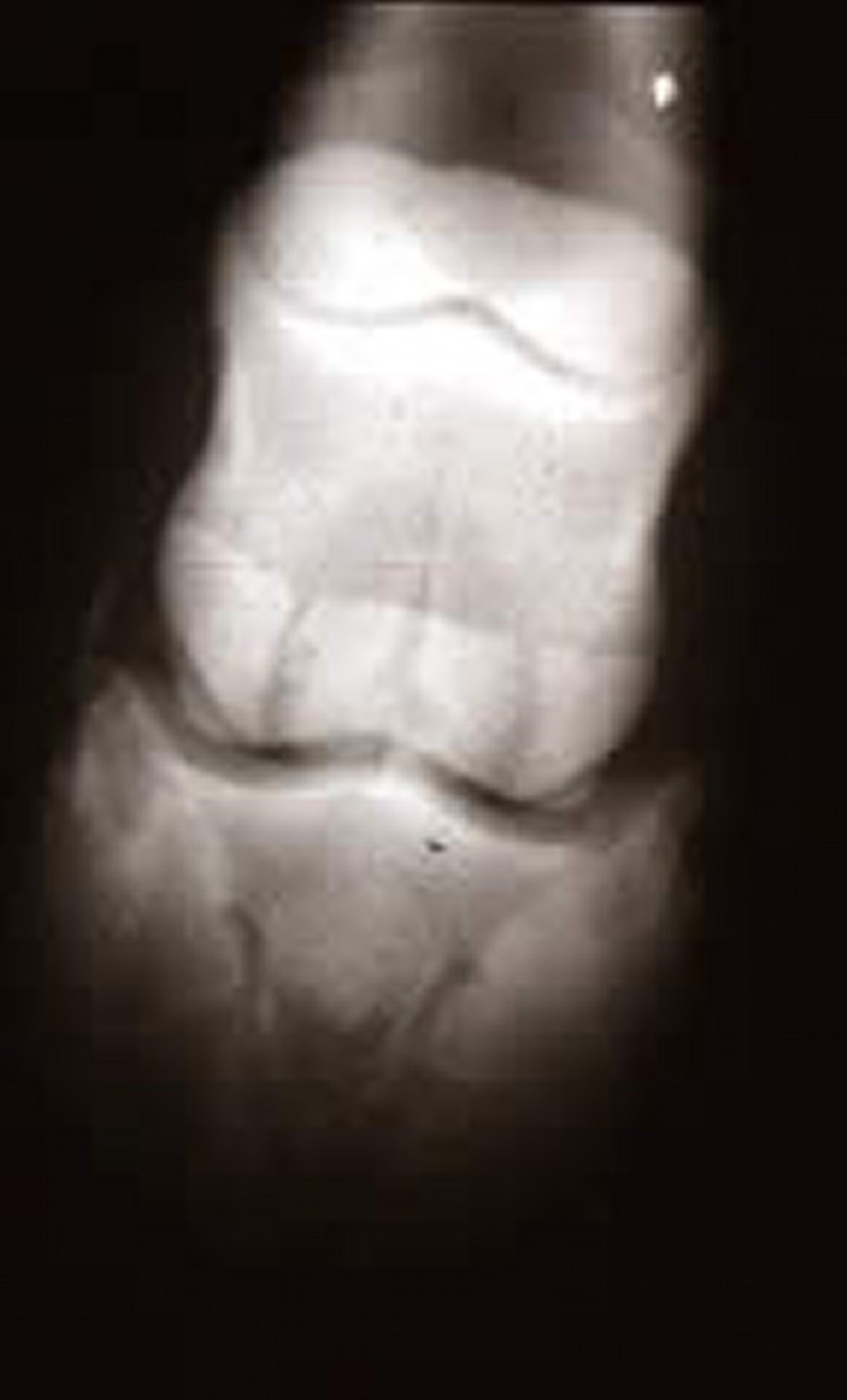Courtesy of Dr. Ronald Green.
Navicular bone fractures are usually a result of trauma or excessive concussion to the foot, but the cause is not always known. It is much less common than distal phalanx fracture and is more commonly seen in the forelimb. Although pain is variable, hoof testers usually induce a painful response over the frog. Lameness is severe with acute fractures, but it may be less in a chronic fracture in which a fibrous union has presumably failed. The lameness usually is markedly improved by palmar digital nerve block (which blocks both the navicular region and the coffin joint). Radiography confirms the diagnosis, in which a sagittal fracture is usually found medial or lateral to the midline; care must be taken to pack the sulci of the frog to avoid artifacts that appear as navicular bone fractures.
Conservative treatment is prolonged rest with corrective shoeing to apply a dramatically raised heel (up to 12°); however, a bony union at the fracture site is seldom satisfactory, and the prognosis is guarded to poor. Surgical repair by lag screw has been described to have a better prognosis.
